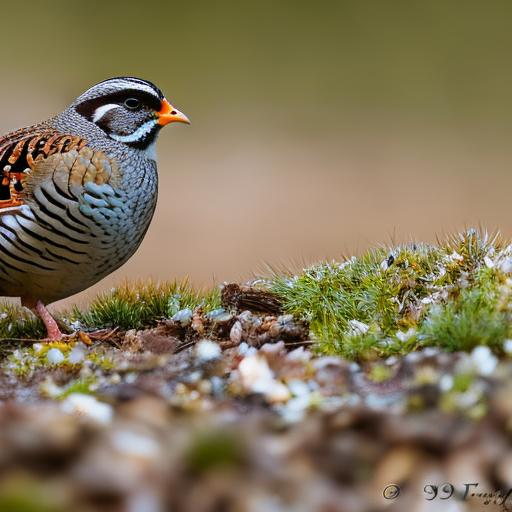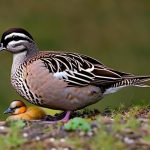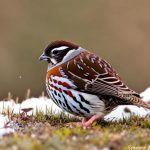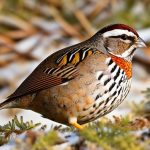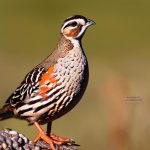When it comes to choosing the right housing for your quail, there are a few key factors to consider. Firstly, you’ll want to ensure that the housing provides enough space for your quail to move around comfortably. Quail are active birds and need room to roam, so a spacious enclosure is essential. Additionally, the housing should be sturdy and secure to protect your quail from predators and the elements. This means using materials that are durable and can withstand the outdoor environment.
Another important consideration when choosing housing for your quail is ventilation. Good airflow is crucial for maintaining a healthy environment for your birds, so be sure to select housing that allows for proper ventilation. Additionally, the housing should provide protection from the sun, wind, and rain to keep your quail comfortable and safe. Lastly, consider the ease of access for cleaning and maintenance. You’ll want housing that is easy to clean and sanitize to ensure the health and well-being of your quail.
In summary, when choosing housing for your quail, prioritize space, security, ventilation, weather protection, and ease of maintenance. By considering these factors, you can provide a safe and comfortable home for your quail to thrive in an outdoor setting.
Key Takeaways
- Choose a housing option that provides enough space for your quail to move around and feel comfortable
- Install predator-proof fencing and secure housing to protect your quail from potential threats
- Create a natural environment with suitable bedding, hiding spots, and access to sunlight for your quail
- Provide a balanced diet and clean water sources for your quail to ensure their health and well-being
- Regularly clean and maintain the outdoor space to prevent the spread of diseases and parasites among your quail
- Keep an eye on your quail’s behavior and appearance to catch any signs of illness or distress early on
- Introduce new quail to the outdoor environment gradually to minimize stress and potential conflicts among the flock
Providing Adequate Protection from Predators
Protecting your quail from predators is essential when keeping them in an outdoor environment. There are several strategies you can employ to ensure the safety of your birds. Firstly, consider the design of the housing itself. Ensure that it is sturdy and secure, with no gaps or weak points that predators could exploit. Additionally, consider adding a predator-proof barrier around the enclosure, such as buried wire mesh or an apron of wire extending outwards from the base of the enclosure. This can prevent predators from digging under or climbing over the enclosure to access your quail.
Another important aspect of predator protection is providing adequate lighting around the enclosure. Predators are less likely to approach if there is ample lighting, so consider installing motion-activated lights or using solar-powered lights to deter potential threats. Additionally, consider using scare tactics such as predator decoys or noise-making devices to keep predators at bay. Lastly, consider the presence of natural predators in your area and take appropriate measures to deter them from targeting your quail.
In conclusion, protecting your quail from predators in an outdoor setting requires a multi-faceted approach, including secure housing, predator-proof barriers, lighting, scare tactics, and consideration of natural predators in the area. By implementing these strategies, you can create a safe environment for your quail to thrive without the threat of predators.
Creating a Suitable Environment for Your Quail
Creating a suitable environment for your quail is essential for their health and well-being in an outdoor setting. One key aspect of this is providing appropriate shelter within the enclosure. This can include natural cover such as shrubs or trees, as well as man-made shelters such as wooden or plastic structures. These shelters provide protection from the elements and a sense of security for your quail.
Another important consideration is providing suitable substrate within the enclosure. This can include grass, sand, or wood shavings, which provide a comfortable surface for your quail to walk on and dust bathe in. Additionally, consider adding enrichment items such as perches or hiding spots to encourage natural behaviors and reduce stress in your quail.
Furthermore, consider the landscaping around the enclosure. Providing a diverse range of plants and vegetation can offer natural foraging opportunities for your quail and create a more stimulating environment. Additionally, consider providing access to a dust bath area, as quail enjoy dust bathing to maintain their plumage and skin health.
In summary, creating a suitable environment for your quail in an outdoor setting involves providing appropriate shelter, substrate, enrichment items, landscaping, and dust bathing areas. By considering these factors, you can create a stimulating and comfortable environment for your quail to thrive.
Feeding and Watering Your Quail in an Outdoor Setting
Feeding and watering your quail in an outdoor setting requires careful consideration to ensure their nutritional needs are met and their health is maintained. When it comes to feeding, it’s important to provide a balanced diet that meets the specific nutritional requirements of quail. This typically includes a commercial game bird feed that is high in protein and supplemented with grains and greens. Additionally, consider providing access to grit or insoluble materials to aid in digestion.
Furthermore, consider the method of feeding. Providing multiple feeding stations can reduce competition among birds and ensure all individuals have access to food. Additionally, consider using feeders that minimize waste and prevent contamination from feces or other debris.
When it comes to watering your quail, it’s important to provide clean and fresh water at all times. Consider using waterers that are designed to prevent spillage and contamination, such as nipple drinkers or bell drinkers. Additionally, ensure that water is easily accessible throughout the enclosure to prevent dehydration.
In conclusion, feeding and watering your quail in an outdoor setting requires providing a balanced diet, multiple feeding stations, clean water at all times, and appropriate waterers to minimize waste and contamination. By considering these factors, you can ensure that your quail receive the nutrition and hydration they need to thrive in an outdoor environment.
Maintaining Cleanliness and Hygiene in the Quail’s Outdoor Space
Maintaining cleanliness and hygiene in your quail’s outdoor space is crucial for preventing disease and ensuring their overall well-being. One key aspect of this is regular cleaning of the enclosure and surrounding areas. This includes removing feces, old bedding, and any debris that could harbor bacteria or parasites. Additionally, consider disinfecting the enclosure periodically to reduce the risk of disease transmission.
Furthermore, consider implementing a regular pest control program to prevent infestations of flies, mites, or other pests that can pose a threat to your quail’s health. This may involve using natural predators such as beneficial insects or implementing traps or barriers to keep pests at bay.
Another important aspect of maintaining cleanliness and hygiene is managing waste disposal. Properly disposing of soiled bedding and waste material is essential for preventing odors and reducing the risk of disease transmission. Consider composting waste material if possible or disposing of it in a manner that minimizes environmental impact.
In summary, maintaining cleanliness and hygiene in your quail’s outdoor space involves regular cleaning, disinfection, pest control, and waste management practices. By implementing these measures, you can create a clean and healthy environment for your quail to thrive.
Monitoring the Health and Well-being of Your Quail

Monitoring the health and well-being of your quail in an outdoor setting is essential for early detection of any issues and prompt intervention when necessary. One key aspect of this is conducting regular health checks on your birds. This involves observing their behavior, posture, and overall condition on a daily basis to identify any signs of illness or injury.
Additionally, consider implementing a regular parasite control program to prevent infestations of mites, lice, or other external parasites that can affect the health of your quail. This may involve using natural remedies or commercial products designed specifically for poultry.
Furthermore, consider monitoring the quality of their feathers and skin condition. Healthy quail should have smooth feathers with no signs of damage or parasites. Additionally, check for any signs of abnormal growths or lesions on their skin that could indicate underlying health issues.
In addition to physical health checks, it’s important to monitor the behavior of your quail. Changes in behavior such as reduced activity, decreased appetite, or increased aggression can be indicators of underlying health issues that require attention.
In conclusion, monitoring the health and well-being of your quail in an outdoor setting involves conducting regular health checks, implementing parasite control measures, monitoring feather and skin condition, and observing behavior for any signs of illness or injury. By staying vigilant and proactive in monitoring their health, you can ensure early detection of any issues and prompt intervention when necessary.
Tips for Introducing New Quail to an Outdoor Environment
Introducing new quail to an outdoor environment requires careful planning and consideration to ensure a smooth transition and minimize stress on the birds. One key tip is to quarantine new birds before introducing them to your existing flock. This allows you to observe them for any signs of illness or disease before they come into contact with your established birds.
Additionally, consider introducing new birds gradually to minimize stress and reduce the risk of aggression from existing flock members. This can be done by placing new birds in a separate enclosure within sight of the existing flock for a period of time before allowing direct contact.
Furthermore, consider providing multiple food and water stations to reduce competition among birds during the introduction process. This can help minimize stress and ensure all individuals have access to essential resources.
Another important tip is to monitor the behavior of both new and existing flock members during the introduction process. Watch for signs of aggression or bullying among birds and be prepared to intervene if necessary to prevent injury.
In summary, introducing new quail to an outdoor environment requires quarantining new birds, gradual introduction to existing flock members, providing multiple food and water stations, and monitoring behavior for signs of aggression or stress. By following these tips, you can ensure a smooth transition for new birds into their outdoor environment while minimizing stress on all individuals involved.
If you’re considering keeping quail outside, you may also be interested in learning about the benefits of using a well-designed coop. Check out this insightful article on the importance of choosing the right coop for your chickens and quail at Poultry Wizard. Understanding the significance of a suitable coop can greatly impact the health and well-being of your birds, making it an essential aspect of successful poultry keeping.
FAQs
What are the benefits of keeping quail outside?
Keeping quail outside allows them to have access to natural sunlight, fresh air, and a more natural environment. It also provides them with more space to roam and forage, which can lead to healthier and happier birds.
What type of housing is suitable for keeping quail outside?
Quail can be kept in a variety of housing options outside, including hutches, aviaries, or pens with proper protection from predators. It’s important to provide shelter from the elements and enough space for the quail to move around comfortably.
What do quail eat when kept outside?
Quail are omnivores and eat a diet that consists of seeds, grains, insects, and vegetation. When kept outside, they can forage for a portion of their diet, but supplemental feed may also be necessary to ensure they receive proper nutrition.
How do you protect quail from predators when kept outside?
To protect quail from predators when kept outside, it’s important to use secure housing with wire mesh to prevent access from predators such as foxes, raccoons, and birds of prey. Additionally, providing a covered area for the quail to retreat to at night can help keep them safe.
What are the considerations for keeping quail outside in different climates?
When keeping quail outside in different climates, it’s important to consider temperature extremes, humidity levels, and protection from the elements. Providing shade and access to water in hot climates, and insulation and protection from cold and damp conditions in cooler climates, are important considerations.
Meet Walter, the feathered-friend fanatic of Florida! Nestled in the sunshine state, Walter struts through life with his feathered companions, clucking his way to happiness. With a coop that’s fancier than a five-star hotel, he’s the Don Juan of the chicken world. When he’s not teaching his hens to do the cha-cha, you’ll find him in a heated debate with his prized rooster, Sir Clucks-a-Lot. Walter’s poultry passion is no yolk; he’s the sunny-side-up guy you never knew you needed in your flock of friends!

